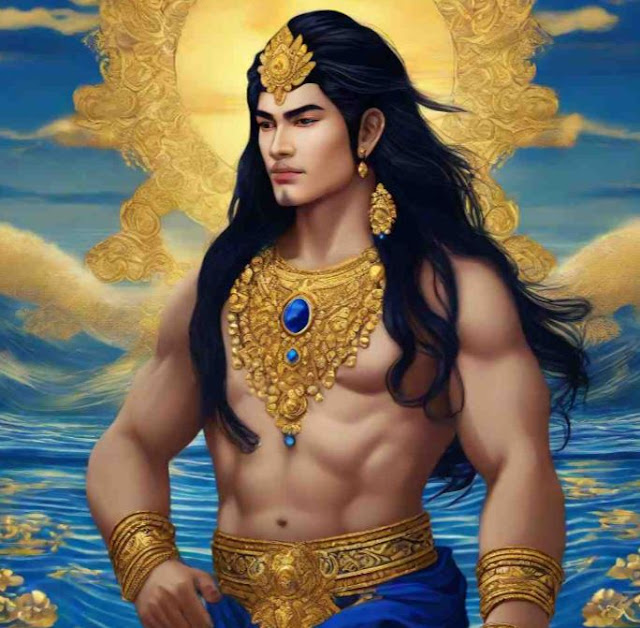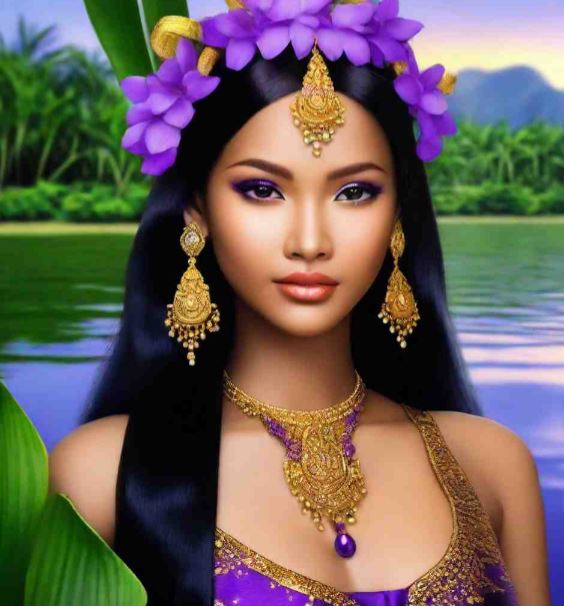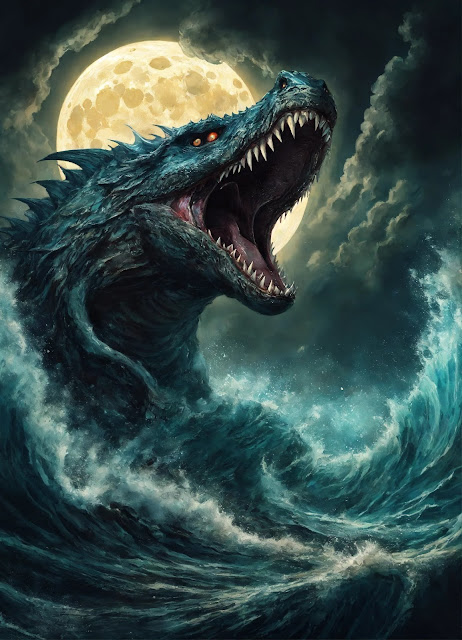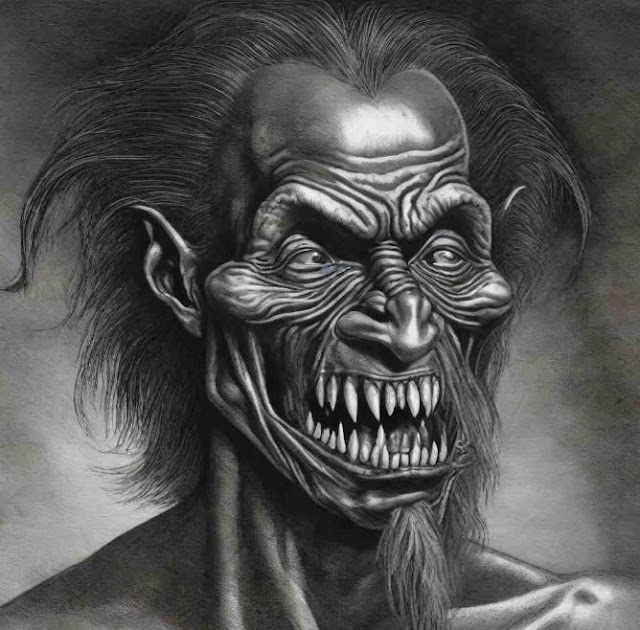**Mga Mitolohiya ng Bikolano at Visaya: Magkasalukuyang Kuwento ng mga Diyos at Nilalang**
Nakakalito at minsan nakaka sakit ng ulo ang mitolohiya ng Pilipinas. Ngunit ito rin ay nakaka aliw Ang mga mito at alamat ng mga Bikolano at mga Bisaya ay magkasalukuyang at magkaakibat isinalaysay mula pa sa simula ng pinaka-unang kolonya, bumubuo ng isang kakaibang anyo ng masalimuot na kwento tungkol sa mga diyos, nilalang, bayani, at mga tao. Bagamat ang panahon ng kolonisasyong Espanyol ay nagdala ng mga hamon, nananatili ang mga naratibong ito bilang patunay ng kayamanan ng kulturang Bikolano at Bisaya. Pinag-isa ng iisang pinagmulang kultura, nagtatampok ang mga kulturang ito ng kahanga-hangang pagkakatulad, mula sa kanilang sistema ng kasta hanggang sa kanilang mga mito, naglilikha ng kakaibang eksplorasyon sa magkakasanib na mga paniniwala.
Ang mga kolonyang Ibalong ng Bikol ay nahanay sa Konfederasyon ng mga Bisaya, isang alyansa na matatagpuan sa isla ng Panay. Habang naglakbay ang mga Bisaya patungo sa mga pook tulad ng Lawa ng Taal at Tangway ng Bicol, nagsimula ang magkakasalukuyang pag-uugma ng kanilang mga kultura. Ang kanilang mga kapani-paniwala, diyos, at mito ay nagpapakita ng isang pagpapakatibay ng kosmos mula sa kaguluhan. Ang oral na tradisyon ng mga komunidad na ito ay nagdadala ng mga kwento na sumasagot sa malalim na katanungan, naglalantad ng iisang pananaw sa mundo at pagsasarili sa isang pandaigdigang konteksto.
Sa simula, parehong naniniwala ang mga Bikolano at Bisaya sa isang walang anuman, mula sa kung saan sumibol ang malaking karagatan at walang hanggang kalangitan. Ang mga diyos tulad ni Languit at Tubigan ay namumuno sa kalangitan at karagatan sa mitolohiyang Bikol, katulad ng paghahari nina Maguayan at Kaptan sa mitolohiyang Bisaya. Ang kosmikong naratibo ay may kahanga-hangang pagkakatulad, na naglalantad ng interconnectedness ng mga kulturang ito.
Si Dagat, ang karagatan, at si Paros, ang hangin, sa Bikol, ay may paralelismo sa pag-iisa nina Lidagat at Lihangin, ang hangin, sa mga alamat ng Bisaya. Ang mga kwento na ito ay nagbunga ng mga anak na naglaro ng pangunahing papel sa mga sumunod na kwento. Ang mga pagkakatulad sa daloy ng pangyayari at sa paglalarawan ng mga diyos ay nagpapakita ng isang iisang pundasyon ng kultura.
Ang pag-uugma ng mitolohiya ng mga Bikolano at Bisaya ay kumikilos patungo sa kanilang mga panginoon. Gayunpaman, hindi ito palaging tahimik, dahil ang ilan sa mga diyos ng mga Bisaya ay itinuturing na may takot at pag-aalinlangan ng mga Bikolano. Si Naguined, ang diyos ng digma at lason ng mga Bisaya, ay naging masamang puwersa, kasama ang kanyang mga kapatid na sina Arapayan at Magkaburak, sa mga kwento ng mga Bikolano. Sa tawag ni Asuang mula sa kabilang bahagi ng dagat, dumating sila kasama ang mga mananakop na Bisaya, na nagtatampok ng isang trinidad ng mga guwapo ngunit demonyong mga tauhan. Ang mga demonyo, sa ilalim ng ilang bersyon, ay nagiging itim na nilalang na uhaw sa dugo ng tao, na nag-iiwan ng pangmatagalang epekto sa mitolohiyang Bikolano.
Si Adlao ng Bikolano ang mga kwentong pumapalipot sa diwata ng araw ay sumasalamin sa mga kwento ni Liadlaw ng mga Bisaya. Ang kabaitan at nag aalab na lakas at tindig ng haring araw na nagbibigay buhay at lakas.
Ang halimaw na si Rabot, na nagmula sa trinidad na ito ng demonyo, ay naging manipestasyon ng mga kahihinatnan ng kanilang kooperasyon. Ang kuwento ng isang aliping babae na nakakatagpo sa guwapo trinidad sa tabi ng dalampasigan ay nagbigay-diin sa madilim na kalikasan ng kanilang mga interaksyon at sa mga sumunod na kapanganakan ng isang malakas na halimaw.
Ang Bakunawa, isang diyos na tagapamahala ng daanan patungo sa kabilang buhay, ay may kahalagahan sa buong arkipelago. Sa mga paniniwala ng mga Bikolano at Bisaya, may papel ang Bakunawa sa mga laho (eclipse). Gayunpaman, ang kanyang pagkakakarakter ay nag-iba, na sa una, ay inaakalang mabuti ng mga Bikolano bago ito parusahan ng pinakamataas na diyos na ito at maging isang tagapagdala ng malas at kapahamakan.
Nagined, Arapayan at Magkabura - Tatlong magkakapatid na kung nagsasalita ay sabay sabay, makisig malakas, batukan (maraming tato) ngunit ang kanilang tunay na anyo ay demonyong-halimaw na may tatlong ulo
Kan-laon isang masamang diyos ng apoy at lagim, dahilan ng lindol, mga sunog-gubat at pagsalakay ng mga balang. Si Kanlaon ay isang nakakatakot na diwata o diyos ng kasamaan. Kalaban ni Gugurang, samantala sa Kabisaya-an siya ay isang magandang diwata na nagbibigay biyaya sa sakahan. Pagpapalaganap ng kasaganahan ng ani at mapayapang buhay.Kabaliktara ng sa Ibalong kung saan si Kanlaon ay tinuturing na masama.
Si Kalapitnan at ang kanyang kwento ay magkahawig sa kwentong Bisaya tungok kay Sinogo
Si Sidapa, ang guwapong kabiyak ni Bulan, ay nagbigay daan sa pagitan ng dalawang kultura. Sa parehong mga bersyon ng mga Bikolano at Bisaya, ang pagliligawan ni Sidapa sa pagmamahal ni Bulan ay kasama ang mga pagsubok at milagro. Ang kanyang mga pagbabago at kahanga-hangang gawain ay nagpapakita ng isang karakter na, bagamat dayuhan, ay nagkaroon ng mahalagang papel sa pagbuo ng mitolohiya ng parehong rehiyon.
Ang Tamawo at Dalakitnon, mga nilalang na ito ay pinaniniwalaang nagmula sa Visayas sa mga mata ng mga Bikolano tinatawag na Engkanto ng mga Bicolano. Ang mga nilalang na ito, na maaaring maging masamang nilalang o mabuti, ay kaugnay sa pagmamasid sa mga langit ng mga pagpapakasal. Dumudukot ng mga magagandang dilag na kanilang napupusuan.
Ang kwento ng bakunawa at pitong buwan ay nagdagdag sa kayamanang kultura ng mga Bikolano at Bisaya. Bagamat maaaring mag-iba ang mga detalye, nananatili ang kahulugan ng kwento sa parehong salaysay ng Bikolano at Visayan. Ang simbolismo ng mga diyos ng buwan at ang kanilang koneksyon sa kosmikong ayos ay lumampas sa mga rehiyonal na pagkakaiba.
Sa Kabisaya-an partikular sa Capiz (Western Visayas) ay nainiwala sila sa dalawang diyos na si Agurang(Gugurang) at Asuwang (Aswang) na naglaban at nag tuos
Agurang: the good spirit who fought against Asuwang
Asuwang: the malevolent spirit who fought against Aguwang
Si Haliya, ang diyosa ng liwanag ng buwan, ay naging isang nag-uugnay na pangalan na kaakibat ng pagsusulong ng mga kababaihan at kalaban ng Bakunawa. Kanyang pagsamba ay kumalat sa parehong mga rehiyon, kung saan ang mga awit at handog sa kanyang karangalan ay naglalakbay sa mga baybayin ng Visayas.
Sa kabisayaan may mga taong sumasamba kay Bulan
Si Bulan, diwata ng buwan. diyos ng kahanga-hangang kagandahan, ay nagmistulang pangunahing tauhan sa mga mitolohiyang Bikolano at Bisaya. Iniidolo dahil sa kanyang kagandahan, ito'y itinuturing na dahilan ng pagtaas ng tubig sa buwan. Ang kumplikadong relasyon niya, lalo na kay Sidapa, ay nagpapahayag ng mga magkatulad na kwento.
Ang Asuang, isang nilalang ng gabi na kumakain ng tao, ay malakas na nakakatama sa parehong kultura. Para sa mga Bikolano, itinuturing na mga minyon ni Asuang ang mga Asuang, naglalarawan ng gulo at kahindik-hindik.
Si Gugurang, bagamat itinuturing na pinakamataas na diyos ng mga Bikolano, ay nagkaruon ng ibang papel sa mata ng mga Bisaya. Tinuturing na isa sa mga diyos sa ibaba, si Gugurang ay isang masamang diyos na sumasalakay sa mga taga Negros dala dala ang kanyang mga halimaw na ibon. nananatili siyang mas mababa o sa ilalim ng itinuturing na pinakamataas na diyos ng mga Bisaya, si Laon.
Kung bubusalsalin ang magkakaugnay na mito at alamat ng Pilpinas matutuklasang may mga ugnayan ang mga ito, gaya ng mga tao. Pagpapalit palit pagsasalinsalin ng Ang masalimuot na sayaw ng mga diyos, nilalang, at bayani sa mitolohiyang Bikolano at Bisaya ay nag-aalok ng sulyap sa iisang kultura ng mga rehiyon. Sa kabila ng paglipas ng panahon at mga impluwensiya mula sa labas, patuloy na nag-uugma ang mga kuwento ng magkakasalukuyang ito, nagbibigay buhay sa isang masalimuot na kasaysayan na naglalarawan ng malalim na kahulugan ng mitolohiyang Pilipino.
REMINDER
The orally transmitted mythology of the Philippines is intended for sharing and understanding, not for appropriation, commercial exploitation, or the promotion of foreigners and foreign products. It is a dynamic narrative tradition that evolves over time, distinct from the standardized mythologies found in Western and European cultures. Unlike these established mythologies, the Philippine government has not mandated standardized versions of stories and legends.
Orally transmitted stories undergo variations and evolve over time, resulting in numerous different versions. There are many different version told by Filipinos,and retold by Filipinos.




























.jpg)
.jpg)

.jpeg)

.jpeg)









.png)
.jpeg)

.jpeg)









.jpeg)





















.jpg)








.jpeg)
.jpeg)


.jpeg)

.jpeg)
.png)
.png)





.jpeg)




.png)
.png)
.jpeg)
.jpeg)
.jpeg)

.jpeg)
.jpeg)


.jpeg)
.jpeg)


.jpg)





















.jpeg)
.jpeg)
.jpeg)

.jpeg)
.jpg)
.jpeg)





.jpeg)
.jpeg)
.jpeg)
.jpeg)

.jpeg)
.jpeg)
.jpeg)
.jpeg)

.jpeg)

.jpeg)
.jpeg)
.jpeg)
.jpeg)
.jpeg)

.jpeg)
.jpeg)









.jpeg)

.jpeg)
.jpeg)

.jpeg)
